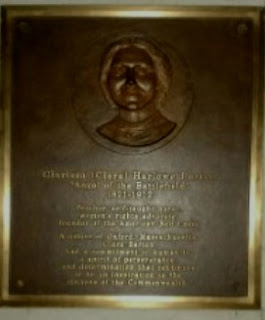A Century of Excellence: Charles River Esplanade Celebrates 100th Anniversary
 2010 marks the 100th anniversary of the Massachusetts Department of Conservation & Recreation’s Charles River Esplanade. I write this article to highlight this great milestone. As a fourth year seasonal Ranger at the Teddy Ebersol’s Red Sox Fields which are located on the Esplanade, I have learned about the park’s unique features. The Esplanade is a well known and popular location that is used for a variety of recreational activities.
2010 marks the 100th anniversary of the Massachusetts Department of Conservation & Recreation’s Charles River Esplanade. I write this article to highlight this great milestone. As a fourth year seasonal Ranger at the Teddy Ebersol’s Red Sox Fields which are located on the Esplanade, I have learned about the park’s unique features. The Esplanade is a well known and popular location that is used for a variety of recreational activities. The Esplanade is a unique place because it has numerous historical attributes portraying the rich history of the city of Boston and the DCR. The term Esplanade - first used in 1910 to describe the parkland, is a French word that means “promenade along a shore.” The Esplanade stretches approximately 3 miles along the Boston side of the Charles River, from the Boston University Bridge to the Museum of Science. The Esplanade contains: 6 miles of walkways & bikeways, 3 boathouses, an athletic field complex, 6 wooden docks, and over 1,900 trees. A special feature of the Esplanade is the Gondola Tour rides on the Charles River. The tours offer visitors an authentic Venetian gondola ride. The Esplanade is also the location of the Community Boating Center – the oldest public boating program in the United States.
Still, the Esplanade has even more characteristics that make it an interesting park. The Esplanade contains 10 memorials and statues. Four statues of notable American civil servants surround the Hatch Shell oval. The statues depict: Charles Devens, George S. Patton, Jr., Maurice Tobin, and David Ignatius Walsh. There are also memorials dedicated to Oliver Wendell Holmes, Sr. and Charles Eliot.
Holmes was a well known 19th century writer & physician.
Eliot was an early advocate for preserving public open spaces in the greater Boston area. In the 1890s, Eliot and his colleague Sylvester Baxter – a journalist, were concerned about the polluted water of the Charles River Basin. Eliot once commented about his vision for the Charles River Basin, saying: “… the metropolitan district is now in a position to make for itself, whenever it may so desire, a river park which with its bordering drives, will extend six miles west from the State House. The broad Basin, surrounded as it will be by handsome promenades, is destined to become the central ‘court of honor’ of the metropolitan district…” After Eliot’s untimely death in 1897, another landscape architect Arthur Shurcliff – Eliot’s protégé, devised more ideas to improve the area known today as the Esplanade.
The Edward A. Hatch Memorial Concertarium is the most visible structure on the Esplanade. The “Shell” as it is commonly referred to as, first opened in 1940 and today it is the location of charity events, concerts, and social gatherings. In addition to several events held throughout the year, the Esplanade is listed as one of DCR’s Healthy Heart Trails. Avid walkers and bike riders frequent the Esplanade regularly. The Dr. Paul Dudley White bike path is named after Paul Dudley White, a cardiologist and former physician of President Dwight D. Eisenhower. Dr. White was an early advocate of bicycle access on the Esplanade. In 1960 bicycles were first permitted on the Esplanade.
On September 25, 2010 at the Hatch Shell, the Esplanade Association will be hosting the Esplanade Centennial Gala, honoring people who have made significant contributions to the Esplanade.


Comments
Post a Comment